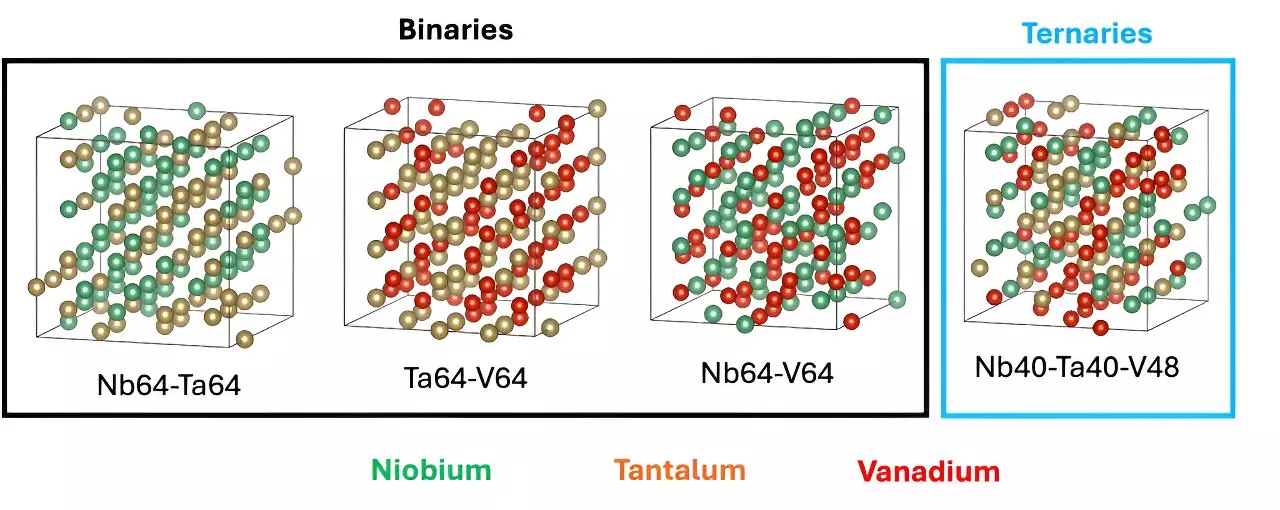As the quest for sustainable energy intensifies, nuclear fusion stands out as a promising solution. However, the efficiency of fusion reactors is heavily dependent on the materials utilized within their construction, particularly the alloys that provide shielding. A groundbreaking study conducted at the Oak Ridge National Laboratory (ORNL), led by AI data scientist Massimiliano Lupo Pasini, unveils an innovative artificial intelligence model designed to propel the discovery of new alloys. This initiative, marked by significant advancements, suggests a transformative shift in how we approach material sciences for fusion applications.
The integration of artificial intelligence into scientific discovery, particularly material research, has opened avenues previously thought unattainable. On this front, the initiative fostered by ORNL aims to answer pressing challenges faced by the nuclear fusion sector. The traditional composition of shielding alloys primarily relied on tungsten, which, despite its heat-resistant properties, often failed to ensure optimal shielding consistency. According to Lupo Pasini, the need emerged for not just functional but revolutionary materials capable of withstanding high temperatures while maintaining structural integrity. This is where AI demonstrates its unparalleled capabilities: We can leverage machine learning algorithms to sift through a virtually infinite array of metallic combinations, drastically reducing the extensive trial and error typically associated with alloy development.
The significant scientific challenge lies in the sheer volume of potential alloy compositions. In the recent study, Lupo Pasini, alongside his colleagues, successfully generated data to support their AI model, ultimately identifying three promising elements for further exploration. This collaboration included experts across various disciplines, each contributing unique insights into the computational and physical sciences. The model developed will not only highlight possible combinations but also inform the design process, thus paving the way for new alloy formulations that could withstand the extreme conditions found in fusion reactors.
Data generation for this endeavor was no small feat. The research team faced substantial hurdles, particularly the computational demands involved. Utilizing renowned supercomputers such as Summit and Perlmutter, the team invested over a year in data accumulation, emphasizing the significant resources required for high-fidelity quantum mechanical calculations. The urgency to access and leverage innovative computing resources from the Department of Energy’s Office of Science cannot be overstated. Such high-performance systems are critical to handling complex simulations that are foundational to the advancement of nuclear materials.
The current study marks only the beginning of a broader journey aimed at harnessing AI for material discovery. Lupo Pasini highlighted the necessity of expanding their research to account for six elements in the development of refractory high-entropy alloys, underlining the complexity and scale of this undertaking. Following the establishment of the initial AI model, the next phase will involve further deep learning processes to refine predictions on how varying elements in different concentrations can yield viable alloy candidates.
This innovative approach holds profound implications not just for the field of nuclear fusion but also for material science as a whole. Successfully identifying and creating new alloy composites could lead to the development of next-generation fusion reactors, significantly enhancing energy production capabilities and supporting global efforts toward clean energy solutions.
The AI-driven approach to discovering new alloys at ORNL indicates a significant leap forward in the materials science arena applied to nuclear fusion technologies. By harnessing the capabilities of artificial intelligence, researchers are positioned to revolutionize how we design and implement materials capable of meeting the rigorous standards required for fusion reactors. As these technologies evolve, the implications reach beyond fusion, potentially spurring advancements across various scientific domains and contributing to a sustainable energy future.


Leave a Reply